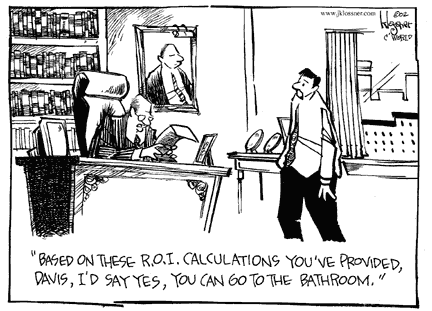 I worked with a client that hired a new VP of HR (we’ll call her Jane to protect the innocent), who immediately told her team that she needed a dashboard of 20 metrics each month from each HR Business Partner in order to run the business.
I worked with a client that hired a new VP of HR (we’ll call her Jane to protect the innocent), who immediately told her team that she needed a dashboard of 20 metrics each month from each HR Business Partner in order to run the business.
Producing that dashboard was a HUGE time sink for each HRBP, so they got together and decided to take one metric off that dashboard every month before submitting it to Jane. Nine months later, Jane finally asked her team why the dashboard was missing metrics. Let that settle in for a moment….
It wasn’t until half of the metrics were missing did Jane finally realize something was wrong. Wow!
If you are an HR practitioner or leader, here are some ways you can keep from becoming Jane and make your metrics matter:
1. Align metrics to strategy. The main objective for producing metrics should be to show that the business is able to operationalize its goals and to improve the performance of the operation by meeting these goals. Before determining your key metrics as an HR function, you need to understand the business strategies and goals, and develop HR strategies and metrics that measure your performance to these goals.
2. Make sure metrics tell the whole story and incentivize proper behavior. If your metrics are only telling a small part of the story, they are likely to drive the wrong behavior. As a real-world example, one of an airline’s ultimate goals is customer satisfaction, and one way to make satisfied customers is on-time arrivals. Airline A and Airline B used metrics to incentivize on-time arrivals in two different ways: Airline A incentivized gate agents and flight crews as a group for on-time arrivals, while Airline B incentivized gate agents to load the plane on time and flight crews to arrive at the destination gate on time. Airline A’s incentive structure and metrics resulted in more on-time arrivals and higher customer satisfaction, while Airline B’s incentive structure resulted in lower customer satisfaction – Airline B’s gate agents loaded planes on time even though they knew the flight was delayed, leaving customers stuck on delayed planes.
3. Segment metrics by audience. When distributing your metrics, make sure that you segment them to be relevant to the intended audience. As an example, when you’re discussing the performance of your recruiting function with your recruiters, time to fill is a very relevant metric – this is the metric that the recruiters have direct control over. However, when reporting metrics to your internal business clients, they are likely to be more interested in time to hire, since that governs when they’ll have a resource available to contribute to their business goals. And, if you think even bigger, the real relevant business metric is time to productivity. Although producing this metric will involve a partnership between multiple HR departments (TA and L&D), your internal clients will be able to use this to plan their business much more effectively.
4. Use metrics to move the needle. When you collect a metric, you should immediately establish a current baseline and a future target. This allows you to use the metric to improve business results, rather than just collecting metrics as an end in itself. This also allows you to advertise and market the improved performance to your business clients.
Metrics are indeed an important part of managing a business. But if you don’t make sure your metrics matter, then gathering your metrics is just a huge, irrelevant waste of time. Don’t end up like Jane!


